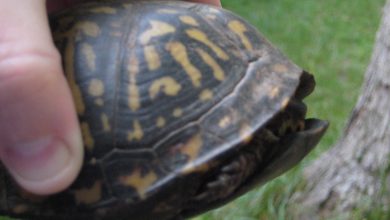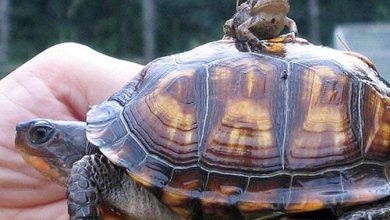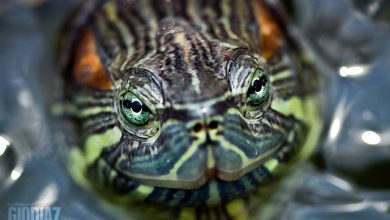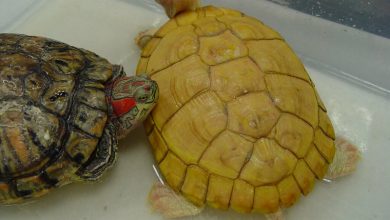Can Turtles Eat Celery? » In this article, we delve into the topic of whether turtles can eat celery. We explore the nutritional value of celery for turtles, their digestive system, feeding behavior, health benefits, risks and considerations of feeding celery, and the importance of variety in turtle diets.
Key Takeaways
- Celery is a nutritious food for turtles, providing essential nutrients for their well-being.
- Turtles have a slow digestive process, so moderation is key when feeding them celery.
- Observing a turtle’s response to celery can help determine its compatibility with their diet.
- Feeding celery to turtles in moderation can lead to potential health improvements.
- It is important to consider the risks and guidelines for safe celery feeding when incorporating it into a turtle’s diet.
Nutritional Value of Celery for Turtles
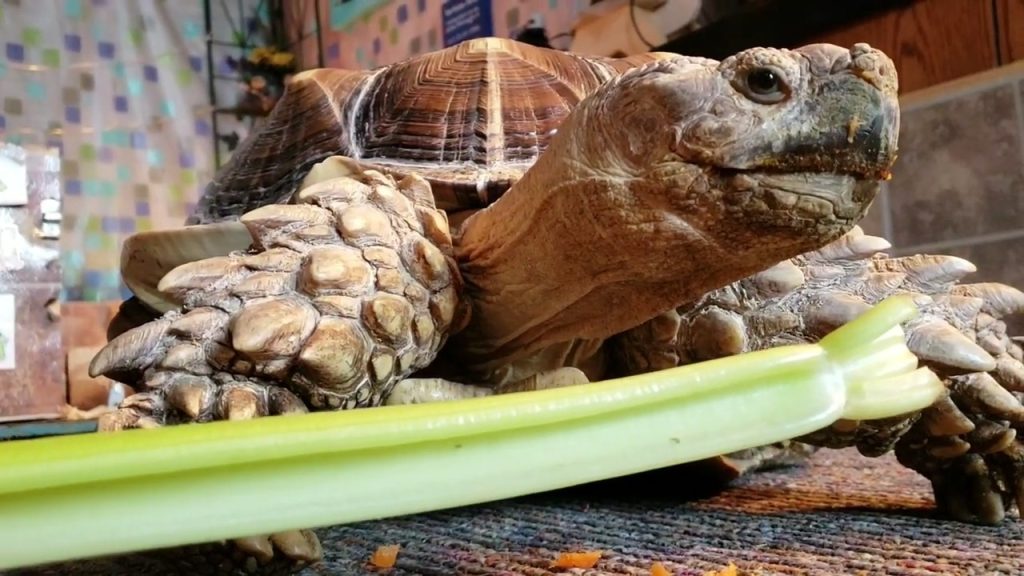
Analysis of Celery’s Nutrients
Celery is often considered a low-calorie vegetable, but it is rich in certain nutrients that can be beneficial for turtles. The primary components of celery include water, fiber, and vitamins such as vitamin A, vitamin K, and folate. These elements play a crucial role in the overall health of turtles, supporting functions like vision, blood coagulation, and cellular growth and repair.
In the context of a turtle’s diet, the high water content in celery can aid in hydration, while the fiber contributes to a healthy digestive system. However, it is important to note that celery should not be the sole item in a turtle’s diet due to its limited protein and calcium content, which are essential for turtle growth and shell development.
While celery can be a part of a balanced diet for turtles, it should be offered in moderation and as part of a varied diet that includes other vegetables and leafy greens high in calcium and fiber.
The table below summarizes the key nutrients found in celery and their relevance to turtle health:
| Nutrient | Relevance to Turtles |
|---|---|
| Water | Hydration |
| Fiber | Digestive health |
| Vitamin A | Vision support |
| Vitamin K | Blood coagulation |
| Folate | Cellular repair |
Impact of Celery on Turtle’s Diet
Celery, while not a natural staple in the diet of turtles, can be introduced as a supplementary food item. The impact of celery on a turtle’s diet is multifaceted, involving both potential benefits and drawbacks. It is essential to consider the unique dietary needs of different turtle species when incorporating celery into their diet.
- Nutrient Contribution: Celery provides vitamins and minerals that can complement the nutritional profile of a turtle’s diet.
- Hydration: Due to its high water content, celery can aid in hydration, which is crucial for turtles.
- Fiber Content: The fibrous nature of celery can help in maintaining a healthy digestive system.
However, it is important to note that excessive consumption of celery can lead to imbalances in a turtle’s diet. Celery should be offered in moderation, ensuring that it does not displace more nutritionally complete food items.
Moderation is key when introducing celery to a turtle’s diet. It should not become a primary food source but rather a periodic supplement to a well-rounded diet.
When considering the inclusion of celery in a turtle’s diet, it is vital to balance it with other dietary components to avoid any nutritional excesses or deficiencies.
Digestive System of Turtles

Understanding Turtle’s Digestive Process
Turtles possess a digestive system that is both unique and complex, reflecting their diverse dietary needs. The digestive process in turtles begins with ingestion, where food is taken in through the mouth and broken down mechanically by chewing. This is followed by chemical digestion in the stomach and intestines, where nutrients are extracted and absorbed.
- The mouth and esophagus serve as the entry points for food, with saliva aiding in the initial breakdown.
- The stomach’s strong acids and enzymes further decompose the food into a digestible form.
- The small intestine is the primary site for nutrient absorption, while the large intestine handles water absorption and forms feces.
Turtles’ digestive tract is designed to handle a variety of foods, but it operates at a slower pace compared to mammals. This slow digestion is advantageous for extracting maximum nutrients from their food, which is essential for their aquatic and terrestrial lifestyles.
Compatibility of celery with this system requires careful consideration, as turtles’ natural diet consists mainly of protein (from insects, fish, or meat) and plant matter. While celery is low in protein, it is high in fiber, which can be beneficial in moderation. However, excessive amounts of celery could disrupt the delicate balance of a turtle’s diet and digestive health.
Compatibility of Celery with Turtle’s Digestive System
When considering the introduction of celery into a turtle’s diet, it is crucial to understand the compatibility of this vegetable with the turtle’s digestive system. Turtles have a slower metabolism and a unique digestive process that can be sensitive to dietary changes.
- Celery is high in fiber, which can be beneficial for the digestive health of turtles.
- However, the stringy nature of celery may pose a challenge for some turtle species.
- It is important to chop celery into small, manageable pieces to prevent any risk of choking or impaction.
While celery can be a healthy addition to a turtle’s diet, moderation is key to ensure it does not disrupt the digestive balance.
Different turtle species may react differently to celery. For instance, box turtles, which are omnivorous, might handle celery better than other species. It is always recommended to consult with a veterinarian or a reptile nutrition expert before making significant changes to a turtle’s diet.
Feeding Behavior of Turtles
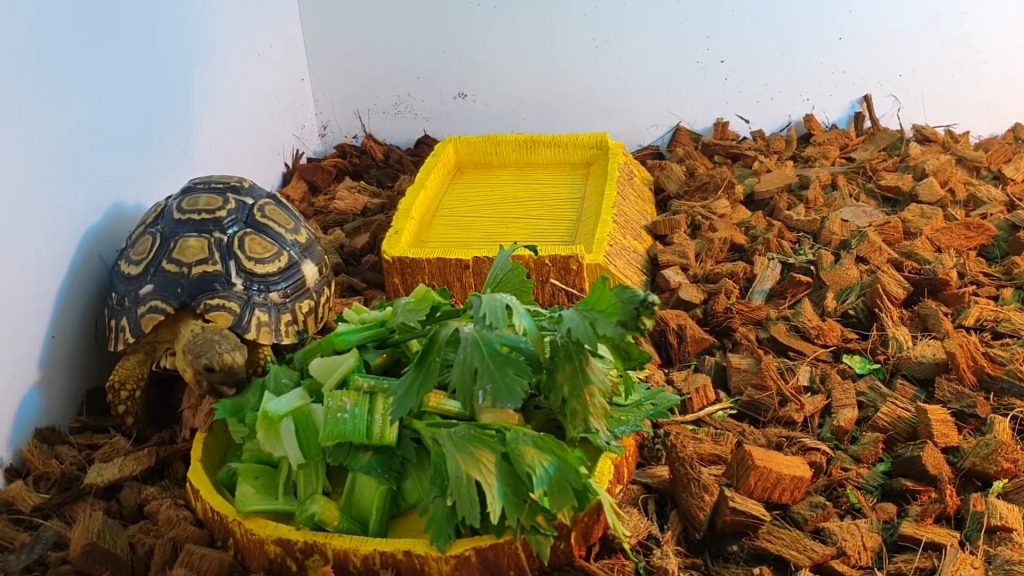
Exploring Turtle’s Natural Feeding Habits
Turtles exhibit a diverse range of feeding behaviors, largely influenced by their natural habitats and the availability of food sources. In the wild, turtles are opportunistic feeders, consuming a variety of foods based on what their environment offers. This can include leafy greens, fruits, insects, and worms, with specific preferences varying among different turtle species.
Aquatic turtles, for instance, often show a predilection for small fish, crustaceans, and aquatic plants. On the other hand, terrestrial turtles may consume a higher proportion of plant-based materials. Understanding these natural feeding habits is crucial when considering the introduction of new foods, such as celery, into their diet.
While celery is not a natural food for turtles, it can be offered as part of a varied and balanced diet, provided it is prepared appropriately and fed in moderation.
The following table outlines the response of different turtle types to celery, based on observations and dietary recommendations:
| Turtle Type | Response to Celery | Notes |
|---|---|---|
| Aquatic Turtles | Generally Acceptable | Should be cut into small, manageable pieces |
| Terrestrial Turtles | Varies | Some may show less interest |
| Box Turtles | Often Enjoy | Can be mixed with other vegetables |
| Sulcata Tortoises | Occasionally Accept | High fiber content is beneficial |
It is important to note that while some turtles may accept celery, it should not replace the core components of their diet, which are essential for their health and well-being.
Observations on Turtle’s Response to Celery
In the quest to understand how turtles react to celery, researchers and turtle owners alike have observed their behavior when presented with this vegetable. Turtles exhibit a range of responses to celery, from eager consumption to complete disregard. This variability is influenced by individual preferences and the type of turtle.
- Box turtles, known for their omnivorous diet, often show interest in celery as part of a varied diet.
- Sulcata tortoises, which are primarily herbivorous, may nibble on celery, although it should not form the bulk of their diet.
- Aquatic turtles may be less inclined to consume celery, possibly due to its texture and the effort required to consume it underwater.
It is crucial to monitor a turtle’s reaction to new foods like celery, ensuring that it is both safe and palatable for them. Gradual introduction and observation are key.
While some turtles may find celery to be a palatable snack, others may ignore it, suggesting that taste and texture preferences play a significant role. The table below summarizes the observed willingness of different turtle species to consume celery:
| Turtle Type | Response to Celery |
|---|---|
| Box Turtles | Often Willing |
| Sulcata Tortoises | Occasionally Willing |
| Aquatic Turtles | Less Willing |
Health Benefits of Celery Consumption
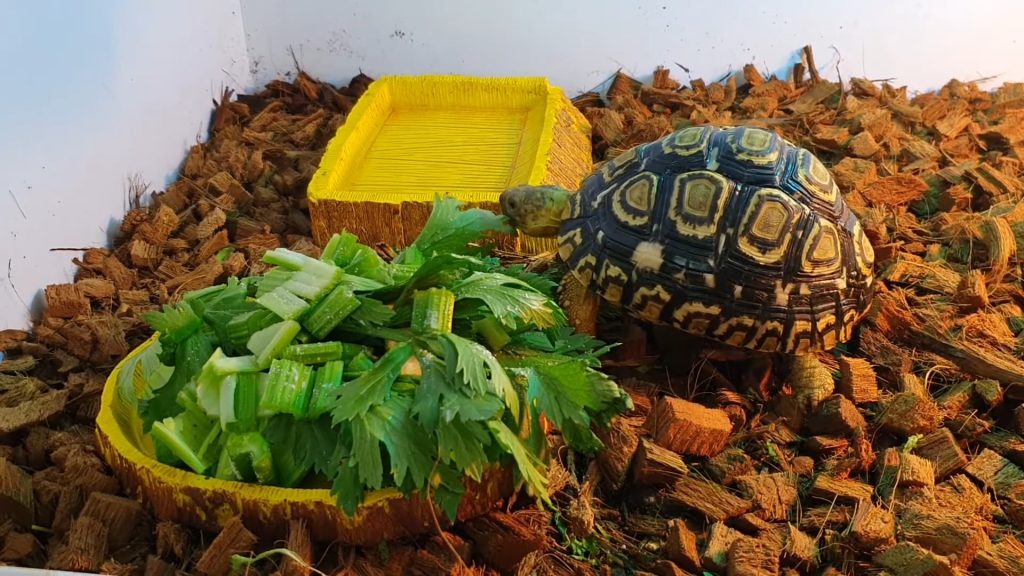
Potential Health Improvements for Turtles
Celery, being low in calories and high in fiber, can contribute to the overall health of turtles when introduced into their diet in moderation. The high water content of celery also aids in hydration, which is crucial for turtles’ kidney function and overall well-being.
- Vitamin A: Essential for healthy eyesight and immune function.
- Vitamin K: Supports blood clotting and bone health.
- Folate: Necessary for cellular growth and metabolism.
While not a staple food, celery can offer variety and enrichment to a turtle’s diet, potentially stimulating more natural foraging behavior.
However, it is important to balance the inclusion of celery with other dietary needs to ensure turtles receive all necessary nutrients. Overreliance on any single food item, including celery, can lead to nutritional deficiencies or imbalances.
Comparison of Celery with Other Turtle Foods
When comparing celery to other foods commonly included in turtle diets, it’s important to consider the overall balance of nutrients each food provides. Celery, while low in calories and high in water content, may not offer the same level of nutritional density as other options.
- Leafy greens: Higher in calcium and essential vitamins.
- Aquatic plants: More aligned with natural turtle diets.
- Commercial turtle pellets: Formulated to meet all dietary needs.
- Fruits: Should be given sparingly due to high sugar content.
While celery can be a hydrating snack, it should not replace more nutrient-rich foods that are crucial for a turtle’s health and growth.
Incorporating celery into a turtle’s diet requires a careful approach to ensure that it does not lead to nutritional imbalances. As a supplementary food, celery can add variety and enrichment to a turtle’s feeding routine, but it should not be a staple. The table below provides a quick comparison of celery with other turtle-friendly foods based on key nutrients.
| Food Item | Calcium | Vitamin A | Fiber | Protein |
|---|---|---|---|---|
| Celery | Low | Low | High | Low |
| Leafy Greens | High | High | High | Moderate |
| Aquatic Plants | Moderate | Moderate | High | Moderate |
| Turtle Pellets | High | High | Moderate | High |
| Fruits | Low | High | Low | Low |
Risks and Considerations of Feeding Celery to Turtles
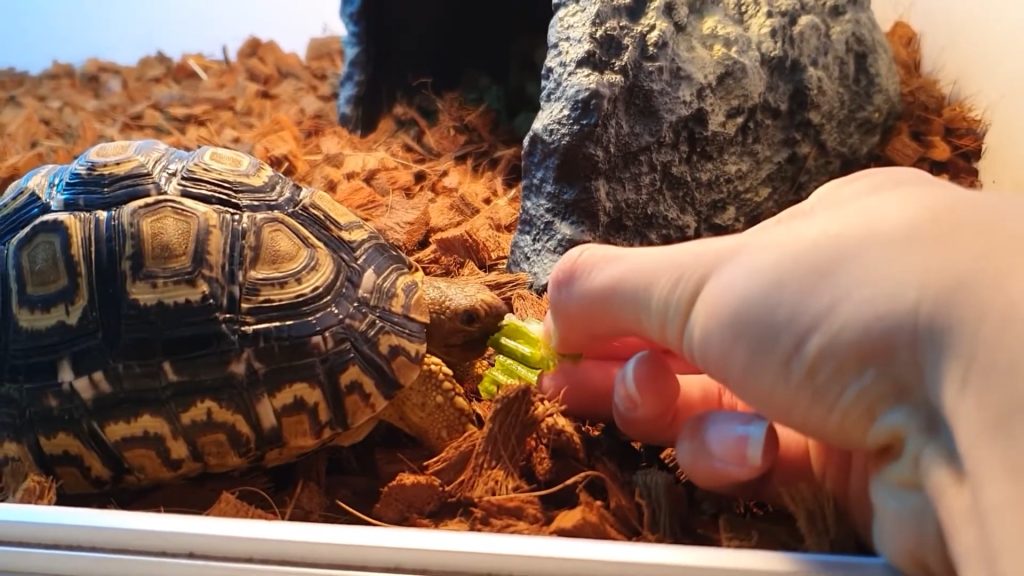
Identifying Potential Risks
While celery can be a nutritious snack for turtles, it is crucial to identify potential risks associated with its consumption. High levels of oxalates found in celery can lead to the formation of kidney stones if consumed in large quantities, particularly in species such as sulcata tortoises and box turtles.
- Choking Hazard: Celery’s fibrous strands may pose a choking risk, especially for smaller turtles.
- Nutritional Imbalance: Overreliance on celery can cause a nutritional imbalance due to its low protein and high water content.
- Pesticide Exposure: Turtles can be sensitive to chemicals; thus, feeding them non-organic celery might expose them to harmful pesticides.
It is imperative to consider the size and species of the turtle when introducing celery into their diet. Moderation and proper preparation, such as chopping the celery into small, manageable pieces, can mitigate some of these risks.
Guidelines for Safe Celery Feeding
When introducing celery into a turtle’s diet, it is crucial to do so with caution and moderation. Celery should be offered as a supplement to a well-rounded diet, rather than a primary food source. To ensure the safe consumption of celery by turtles, consider the following guidelines:
- Begin by offering small pieces of celery to observe how the turtle reacts.
- Gradually increase the amount if no adverse effects are observed.
- Always thoroughly wash celery to remove any pesticides or contaminants.
- Cut celery into bite-sized pieces to prevent choking hazards.
It is essential to monitor the turtle’s overall health and behavior changes when new foods are introduced. This cautious approach helps in identifying any potential issues early on.
Remember that the dietary needs can vary significantly between different species of turtles. For instance, aquatic turtles and box turtles may safely consume celery, while other species might have different requirements or restrictions.
Variety in Turtle Diets
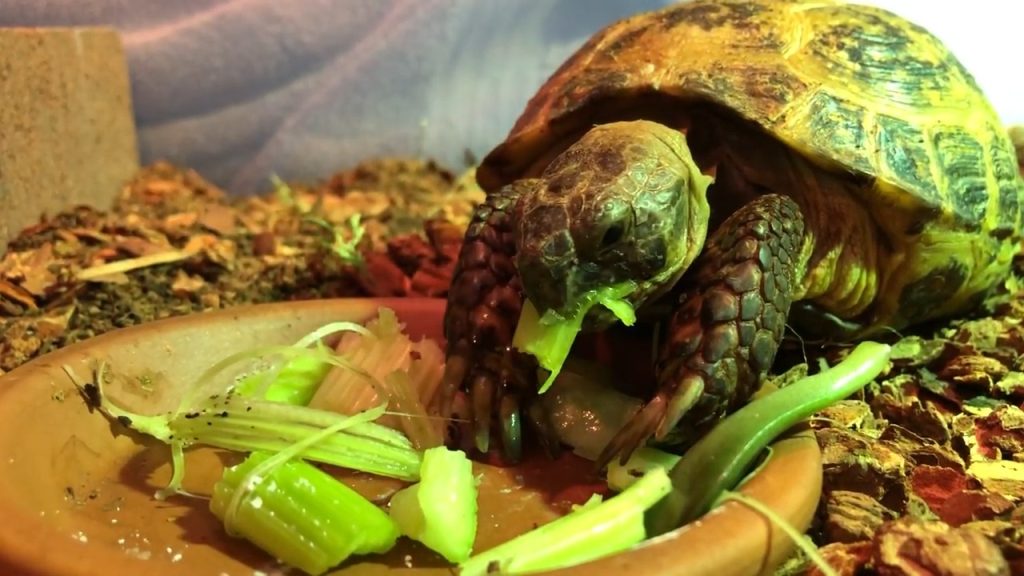
Importance of Diverse Food Choices
A diverse diet is crucial for maintaining the health and well-being of turtles. Variety ensures that turtles receive a broad spectrum of nutrients, which may not be possible through a monotonous diet. Different species of turtles, such as box turtles, sulcata tortoises, and others, have varying dietary needs that must be met for optimal health.
- Box turtles, being omnivores, require a mix of animal protein and vegetation.
- Sulcata tortoises, on the other hand, thrive on a diet rich in grasses and vegetables.
- Aquatic turtles need a diet that includes a significant amount of protein from sources like fish or insects.
Ensuring a variety of foods in a turtle’s diet not only promotes better health but also encourages natural foraging behavior, which is beneficial for their mental stimulation and overall well-being.
While celery can be included as part of a turtle’s diet, it should be offered in moderation and as a part of a nutritionally balanced diet. It is essential to understand the specific dietary requirements of each turtle species to avoid nutritional imbalances or health issues.
Incorporating Celery into Balanced Turtle Diets
When considering the inclusion of celery in a turtle’s diet, it is essential to approach it with balance and moderation. Celery should be viewed as a supplement to a turtle’s diet rather than a staple. This approach ensures that turtles receive a variety of nutrients from multiple food sources, which is crucial for their overall health.
- Introduce celery gradually to observe any adverse reactions.
- Combine celery with other vegetables and leafy greens to provide a well-rounded diet.
- Limit the frequency of celery to avoid overconsumption of any single nutrient.
While celery can be a healthy addition to a turtle’s diet, it is important to remember that moderation is key. Overreliance on any single food item can lead to nutritional imbalances and health issues.
In practice, a turtle’s diet should mimic the diversity they would experience in the wild. This includes a mix of aquatic plants, vegetables, and occasional fruits. Celery, with its crisp texture and nutritional benefits, can be a part of this dietary mosaic, but it should be carefully integrated to maintain the delicate balance required for a turtle’s health.
Conclusion
In conclusion, the question of whether turtles can eat celery has been thoroughly explored in this article. Through examining the nutritional value of celery, the dietary habits of turtles, and potential benefits and risks of feeding celery to turtles, it is evident that celery can be a suitable and healthy option for turtles in moderation. However, it is important for turtle owners to consult with a veterinarian or reptile specialist before introducing celery or any new food into their pet’s diet to ensure the overall health and well-being of the turtle.
Frequently Asked Questions
Can turtles eat celery as part of their diet?
Yes, turtles can eat celery in moderation as part of a balanced diet.
Is celery safe for all types of turtles?
Celery is generally safe for most turtle species, but it’s important to consult a veterinarian for specific dietary recommendations.
How should celery be prepared for turtles?
Celery should be washed thoroughly and cut into small, bite-sized pieces to prevent choking hazards.
Can celery be the main food for turtles?
No, celery should not be the main food for turtles. It should be offered as a supplemental treat.
Are there any health benefits of feeding turtles celery?
Celery can provide vitamins and minerals that contribute to the overall health and well-being of turtles.
What are the risks of feeding turtles celery?
Potential risks include choking hazards if the celery pieces are too large and digestive issues if consumed in excess.
How often can turtles eat celery?
Turtles can eat celery occasionally as a treat, but it should not make up a significant portion of their diet.
Can baby turtles eat celery?
Baby turtles should have a diet that is specifically formulated for their growth and development. Consult a veterinarian before introducing celery to baby turtles.
